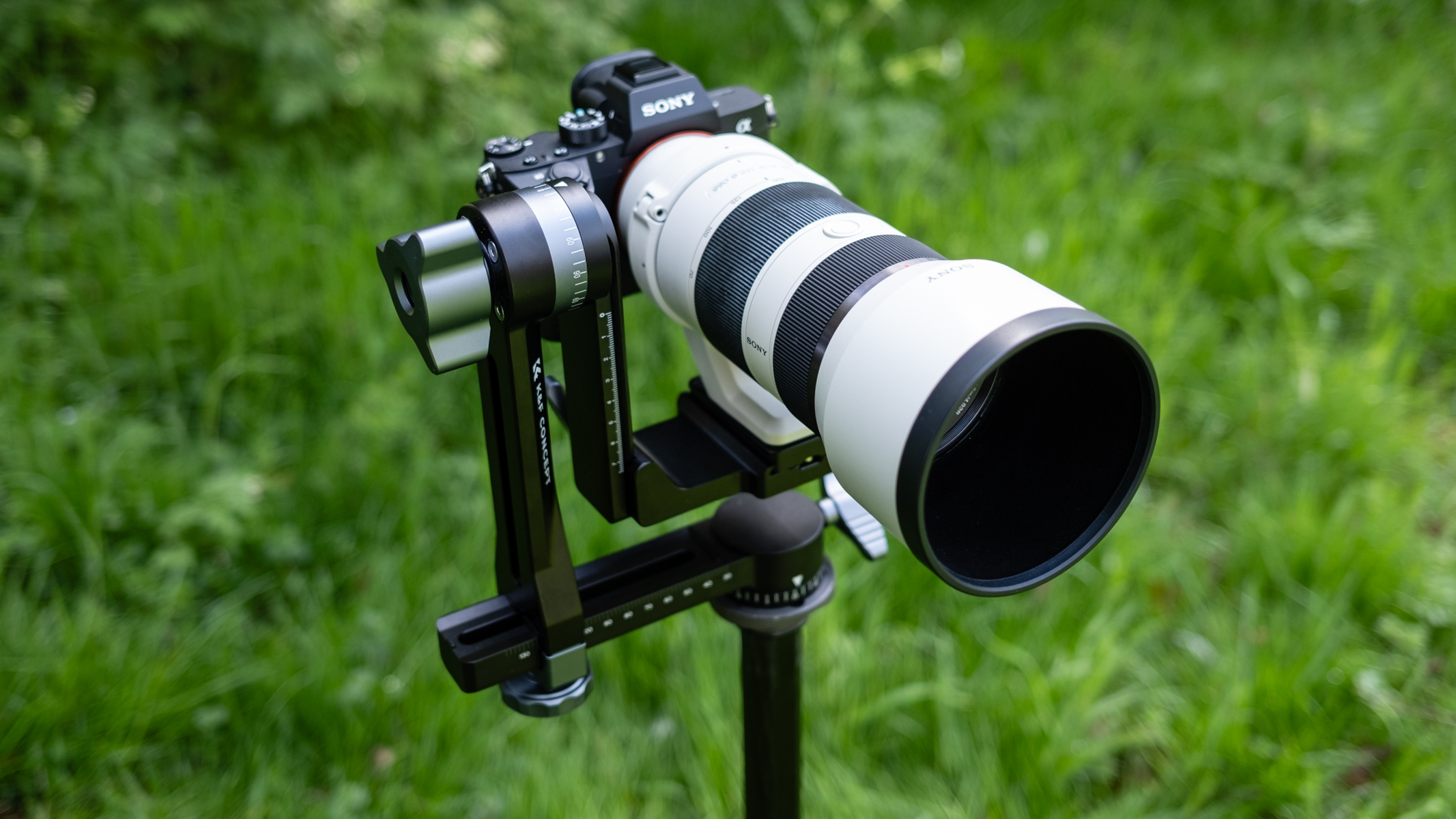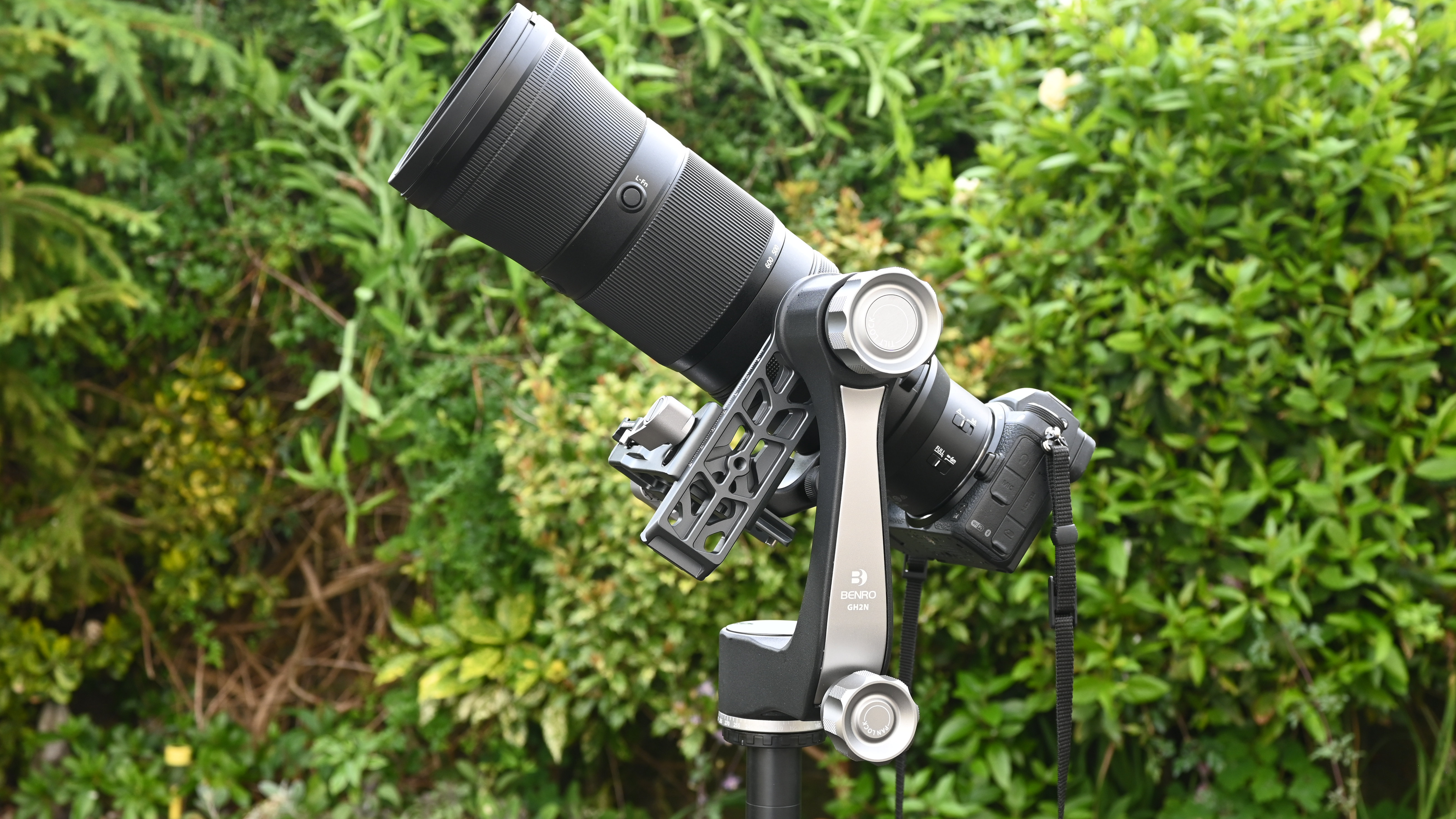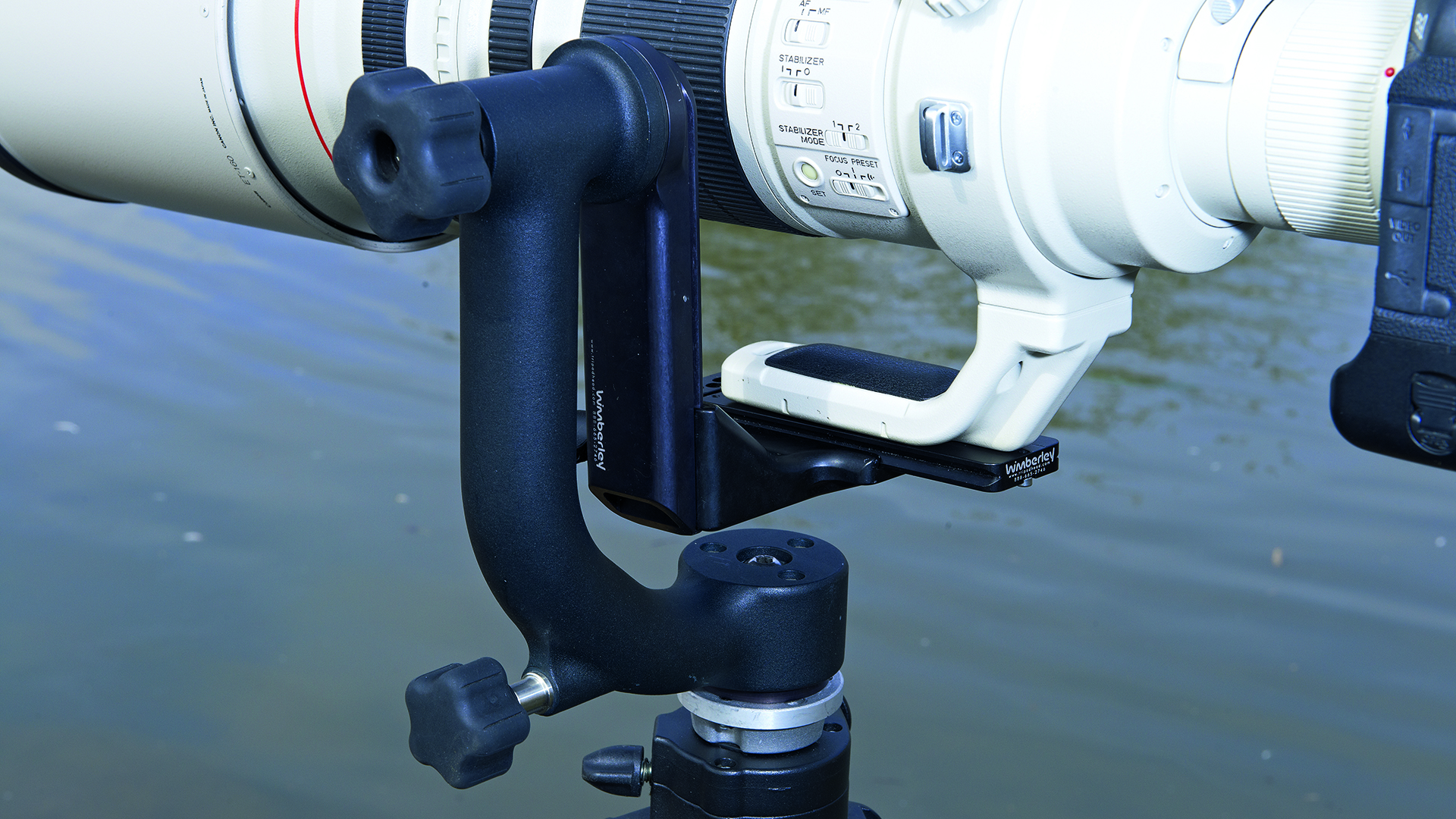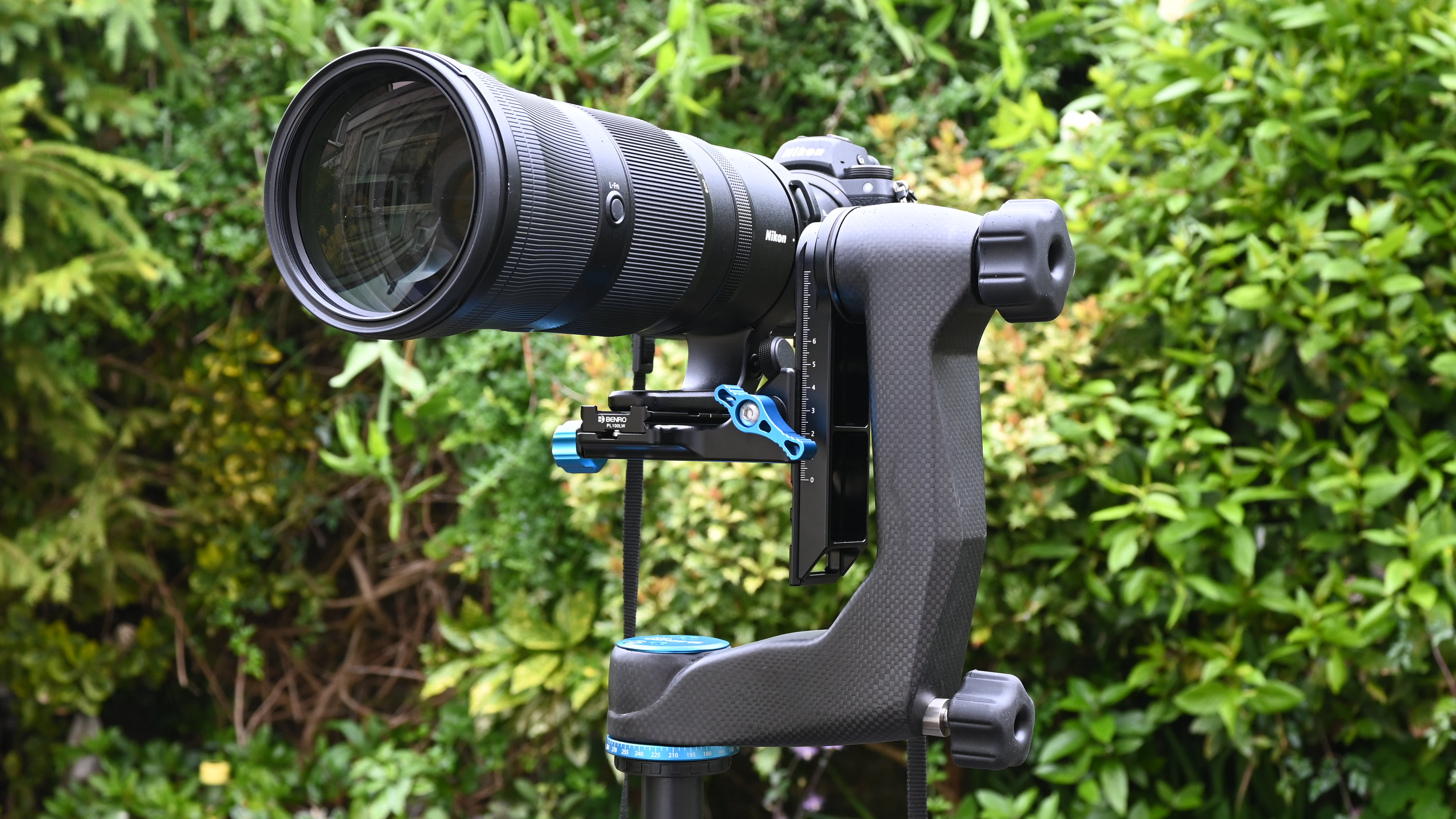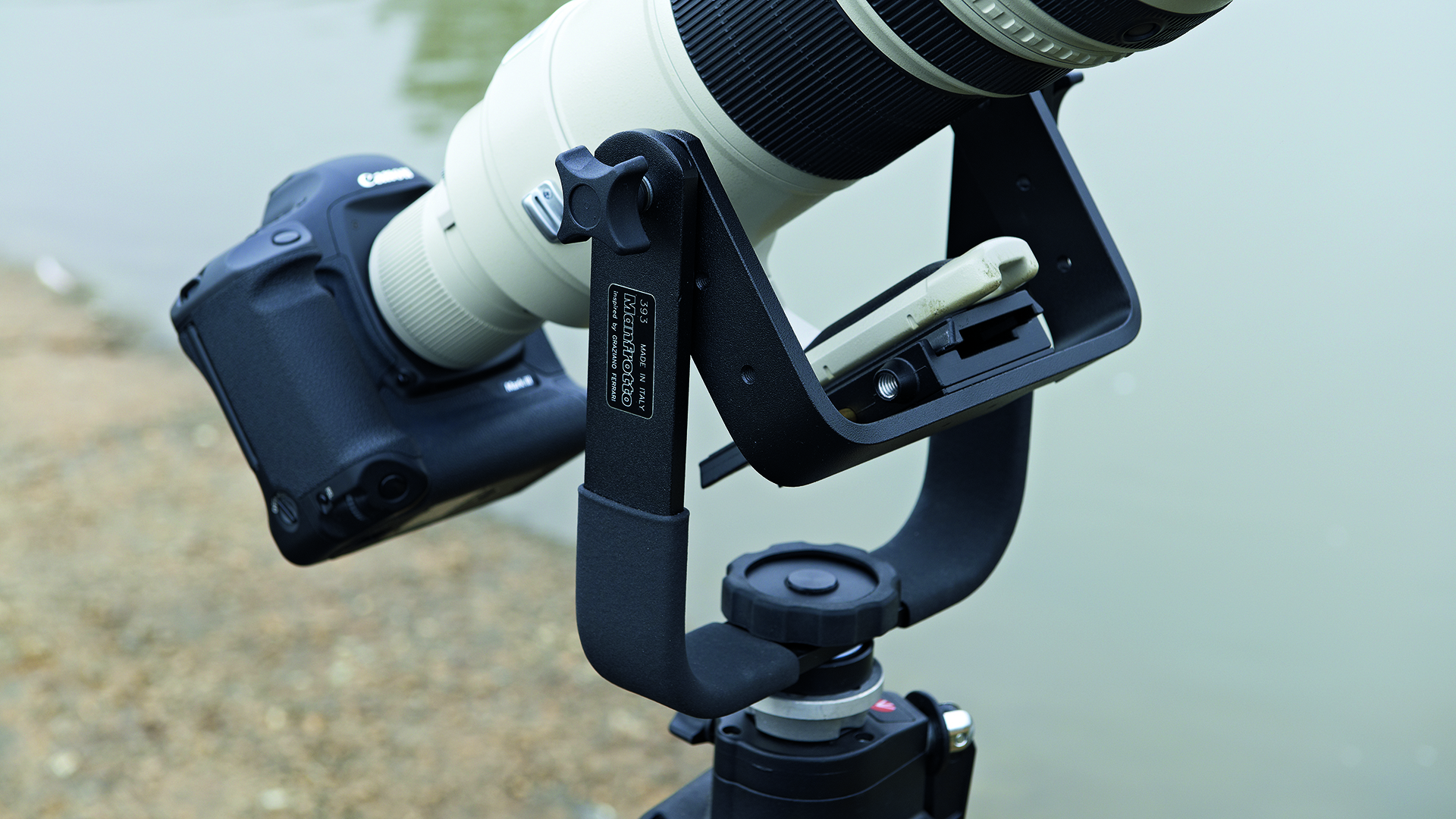The best gimbal heads for tripods in 2025: effortlessly track the action with big lenses
For wildlife, sports and action photography, there’s no beating a gimbal head for smoothly tracking moving subjects, especially if you’re using a big telephoto lens
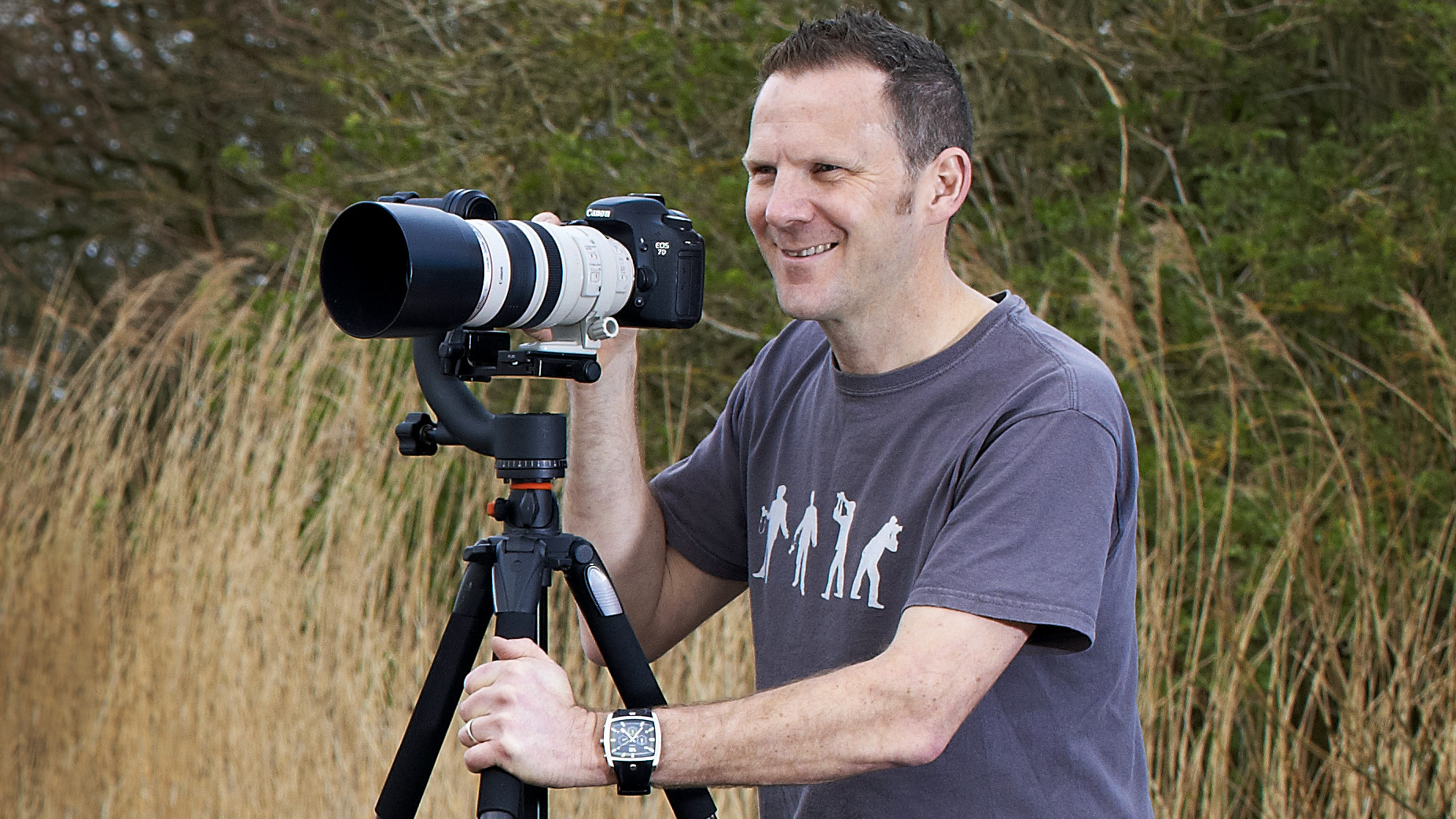
From birds on the wing to wild beasts on the hoof, and from athletes or racecars to aircraft at aerobatic displays, it can be hard to track the action. In fact, it can literally be a pain if you’re using a heavy telephoto lens to close the distance between yourself and what you’re shooting. Shoot handheld and you’ll be feeling the strain sooner rather than later. Use a tripod or monopod and a conventional head will lose its balance as soon as you start tilting the camera.
The great thing about the best gimbal heads is that they effectively make your camera weightless. Taking the load out of heavier setups, a good gimbal head effectively supports the camera in suspension, maintaining its center of gravity during tilting and panning, and making it easy to hold it indefinitely in any position, even when the tilt lock is loosened.
A good gimbal head therefore gives you a rock-solid base for panning shots even if you're using an ultra-heavy telephoto lens. They’re typically used by bird photographers and at airshows, where you need to move a super-telephoto lens quickly to keep up with a subject – and where you’ll often need to wait ages to get the shots you want.
Gimbal heads tend to be sophisticated pieces of kit that command a steep selling price, but that’s not always the case. It pays to choose wisely, so I’ve scoured the shelves to find the best gimbal heads available. These are the gimbal heads I reckon offer the best bang for your buck right now.

Our Guides Editor Adam loves big telephoto zooms for getting closer to the action on birdlife or aviation shoots, but isn't such a fan of lugging them around, so he's your guide to the best gimbal heads to lighten the load.
The quick list

The Leofoto PG-1 Gimbal Head can support up to 25kg yet only weighs 1kg thanks to some skeletal design work and precision engineering – and it's available in a camo finish!
Read more below
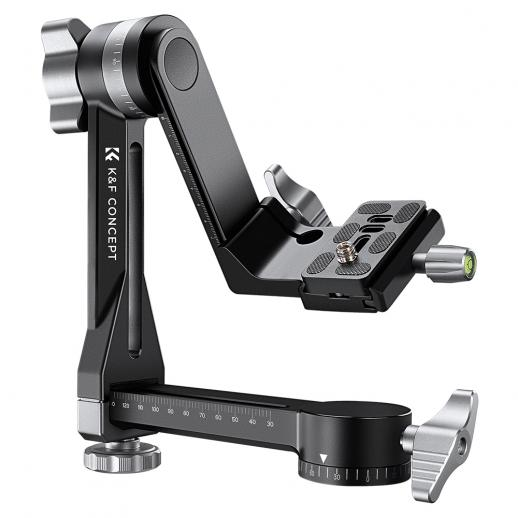
Selling for a snip, this K&F Concept Professional 360º Panoramic Gimbal Head impresses with a hefty 20kg payload and solid aluminum construction, with a full range of movement.
Read more below
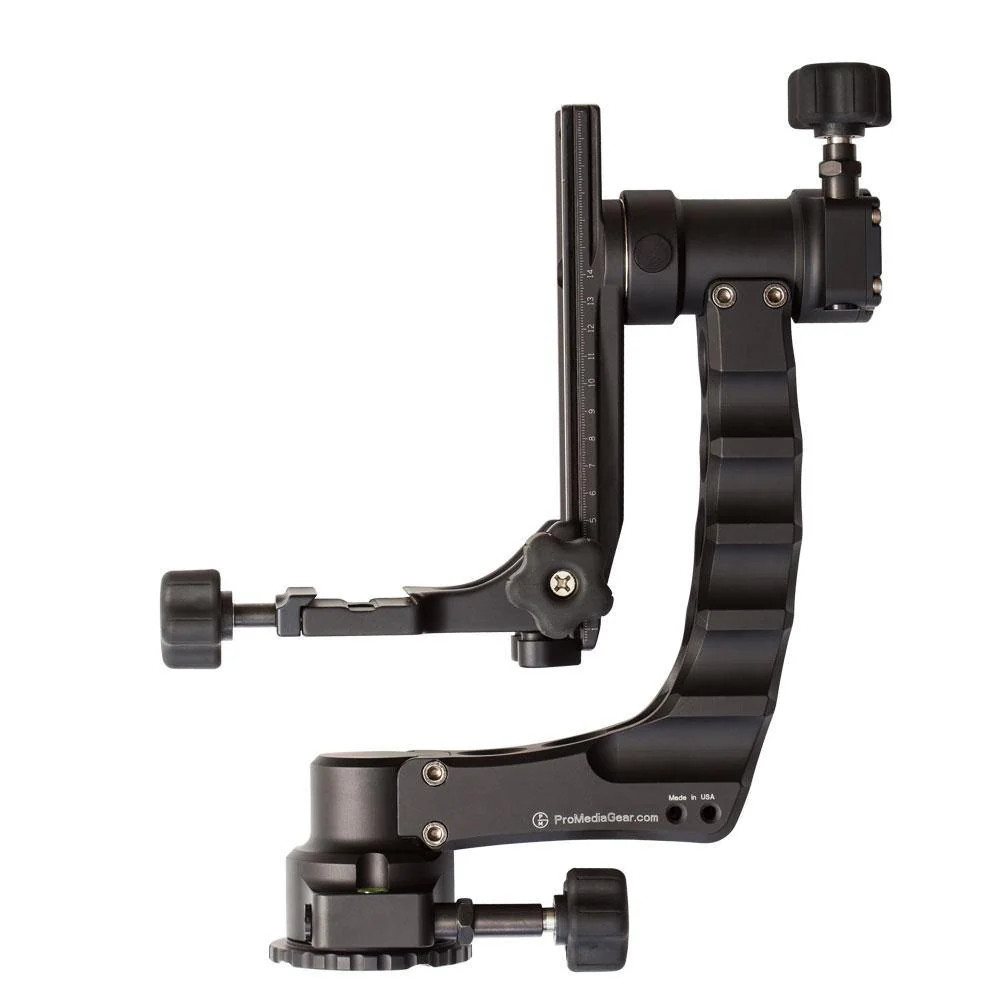
Big, heavy and expensive, the ProMediaGear Katana is intimidating in more ways than one – but it's among the best gimbal heads I've tested.
Read more below
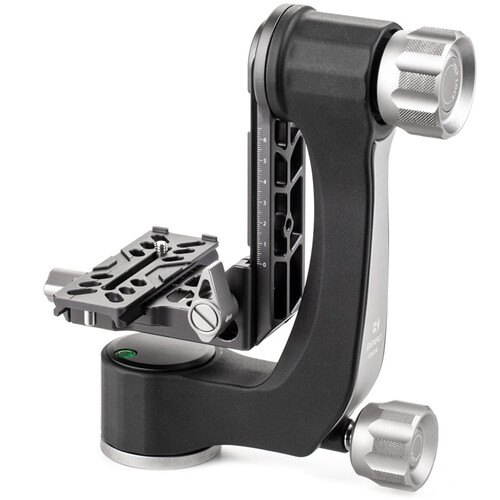
Combining a weight-saving design with a hefty payload rating at an attractive asking price, this really hits the quality and value sweet spot.
Read more below
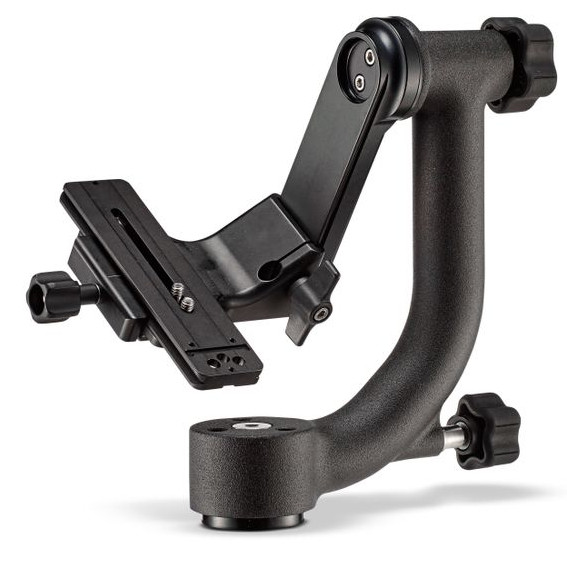
Wimberley's perennially popular gimbal head is an expensive but fantastic choice, with superb freedom of movement and tight tolerances.
Read more below

Benro's carbon fibre gimbal blends a lightweight build with heavy payload support and butter-smooth engineering. Excellent stuff.
Read more below
Load the next products ↴
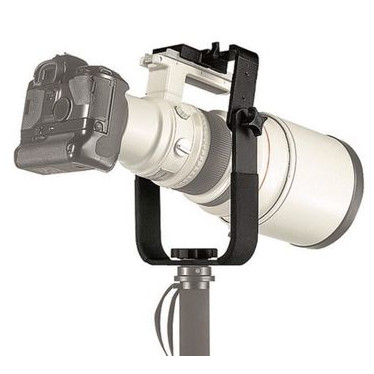
While it's not a gimbal head exactly, the Manfrotto 393 Long Lens Monopod Bracket is a solid, budget-friendly alternative that works with a monopod.
Read more below
Best gimbal heads
Why you can trust Digital Camera World
Best overall
Specifications
Reasons to buy
Reasons to avoid
The 'skeleton' design of the Leofoto PG-1 Gimbal Head certainly catches the eye, but it’s not just for looks; this T6061 aluminum construction makes it surprisingly lightweight yet incredibly strong and rigid. There's no flex, no wobble – just solid support. But what truly sets this gimbal apart for me is the sheer smoothness of its operation. Whether I was panning a full 360 degrees or tilting, the movement was exceptionally fluid and friction-free.
Once I had my camera and a hefty telephoto lens balanced correctly – a process made easy by the generous 90mm height adjustment range for the cradle and the calibrated scales – the whole setup felt practically weightless. Tracking fast-moving subjects, like birds in flight or athletes on the field, became effortless. This is exactly what you want from a gimbal head; it supports the gear while allowing you complete freedom of movement.
The attention to detail is evident. Large, purposeful locking knobs for both panning and tilting are easy to grip and operate. There's even a bubble level on the base plate, which is a small but significant touch for ensuring your horizons are level, especially if you're shooting video or panoramic stills. The locking/release lever for the height adjustment is also well-designed and comfortable to use. Yes, the Leofoto PG-1 sits at a higher price point, but in my opinion, the precision engineering, clever design, and superb performance make it well worth the investment.
Read our full Leofoto PG-1 Gimbal Head review
Best budget
Specifications
Reasons to buy
Reasons to avoid
For the price, the K&F Concept Professional 360° Panoramic Gimbal Head feels impressively solid, constructed from machined aluminium with an anti-oxidation coating. The large, machined aluminium knobs make adjustments easy and secure, which is crucial when you're dealing with heavy camera and lens combinations. And speaking of heavy, it boasts a load capacity of 20kg, so it handled my gear without any issues. Once your camera and lens are balanced, it holds its position nicely, even without everything being fully locked down.
It allows for a full 360-degree rotation, which is great for panoramic shots or tracking moving subjects in wildlife or sports photography. The movements are generally smooth, though I did notice a little stiffness, making it not quite as fluid as some of the more expensive gimbal heads I've used, likely due to the damping. For its price point, however, the performance is more than acceptable.
One design choice I found a bit puzzling was the inclusion of a horizontal adjustment on the arm. While it offers a range of adjustments, it felt a little unnecessary and could confuse beginners. Also, the provided Arca-Swiss tripod plate isn't particularly long, which might limit how much you can adjust for balance with certain lenses. But it's well-made, the large knobs are user-friendly, and it supports a good amount of weight. While the movements could be a tad smoother and some design elements aren't perfect, it delivers good value for money.
See our full K&F Concept Professional 360° Panoramic Gimbal Head review
Best for professionals
Specifications
Reasons to buy
Reasons to avoid
The ProMediaGear GK Katana gimbal head is a serious piece of kit for dedicated wildlife or sports photographers wrestling with hefty super-telephoto lenses. The first thing that strikes you is its robust build quality. This thing is designed to hold up to a colossal 68kg (150lbs), so my 600mm lens felt incredibly secure. Setting it up was straightforward; it comes in a few parts, including the G-shaped aluminium body and the cradle with its Arca-Swiss clamp. The included PX6 lens plate is a nice touch, designed specifically for lens feet.
In use, the GK Katana truly shines. The smoothness of the pan and tilt, thanks to the steel ball bearings, is exceptional. It made my heavy lens setup feel virtually weightless, allowing for quick and effortless tracking of subjects across a scene. I particularly appreciated the ability to customize the friction, so I could dial in the exact feel I wanted. And crucially, when you let go, the gimbal holds the camera and lens in a neutral position. The large, tactile rubber knobs are another highlight. They are easy to grip and adjust precisely. All the locking mechanisms felt 100% reliable and super-strong. I also liked the ergonomic grooves on the main curve, making it easy to grab and carry.
However, there's no getting around the fact that the GK Katana is a hefty piece of equipment, weighing in at 2.53kg (5.58lbs). Its awkward shape also means it’s not the easiest to pack unless you have a pretty large camera bag. But if you're serious about getting the best support and smoothest operation for your big lenses, and can manage the weight, I found the GK Katana to be a superbly crafted tool that makes long sessions much more manageable and productive.
See our full PromediaGear GK Katana review
Best value
Specifications
Reasons to buy
Reasons to avoid
Weighing a reasonable 1.2kg (2.65lb) yet boasting a maximum load capacity of a heavyweight 25kg (55lb), the design of the Benro GH2N incorporates hollowed-out ribs for strength and weight reduction. The premium build quality enables super-smooth, fluid movement of hefty setups and is ideal for tracking moving subjects with long, heavy lenses.
The key to any gimbal head's effectiveness lies in properly balancing the camera and lens by aligning the lens's center with the tilting pivot. I found that the calibrated scales on both the GH2N's panning base and vertical arm helped me to easily make the precise adjustments required. Furthermore, the included long Arca-Swiss type quick-release plate further facilitates perfect balance, which is crucial for achieving a 'weightless' feel and stable positioning of the camera and lens combo without needing to tighten clamps.
In all, I have no hesitation recommending the GH2N for providing solid and steady support for agile tracking and offering admirable performance at a very reasonable asking price.
See our full Benro GH2N review
Best premium
5. Wimberley WH-200 Version II
Specifications
Reasons to buy
Reasons to avoid
The Wimberley WH-200 Version II is an all-around excellent gimbal head, with a well-deserved reputation in the industry. Offering superb freedom of movement even with the largest lenses, the WH-200 Version II has a redesigned panning base compared to the original, with zero play, and its pan-locking knob has been moved to the side for easier one-handed operation. The knobs themselves are grippy and ergonomically designed, making them easy to adjust even when you're wearing gloves.
In use, it's absolutely sublime, both fluid and firm when it needs to be. Wimberley has gone over this head from top to bottom to ensure tight tolerances, and the pan and tilt axes turn with exceptional smoothness. The standardized Arca-Swiss mount ensures broad compatibility, and Wimberley even supplies replacement low-profile lens feet to ensure compatibility with lenses that have a taller than average foot. It's only the higher-than-average asking price that keeps this out of the top spot, but if your budget goes this far, it's absolutely worth it.
Best carbon fiber
Specifications
Reasons to buy
Reasons to avoid
Crafted from luxurious carbon fiber, the Benro GH5C gimbal head offers exceptional quality and performance, significantly enhancing the handling of heavy telephoto lenses by making them feel virtually weightless and enabling fluid, effortless movement. Its carbon fiber construction enables a lightweight build of 1.08kg (2.38lb) while supporting an impressive maximum load of 30kg (66lb). Beyond its lightweight nature, the carbon fiber material maintains a comfortable temperature, even in cold conditions, and contributes to superior vibration resistance.
Key design elements include a calibrated 360-degree panning base with a rubberized lock/release knob, a built-in bubble level for precise setup, and a calibrated swinging arm for accurate height adjustments. When the camera and lens are correctly balanced, even the heaviest setups feel effectively weightless, enabling remarkably smooth and fluid tilting and panning with minimal exertion. The extended Arca-Swiss type quick-release plate allows for meticulous lens balancing and can secure multiple fixing screws to prevent rotation. It looks good too, with distinctive blue accents.
See our full Benro GH5C review
Best budget alternative
7. Manfrotto 393 Long Lens Monopod Bracket
Specifications
Reasons to buy
Reasons to avoid
This isn’t actually gimbal head but, instead, operates as a jointed bracket. Despite its relatively basic design, it weighs 1.6kg and has a hefty maximum load rating of 20kg. The bracket is based on two U-shaped supports, the inner one rotating within the outer one. Three operating heights are available and you can even hang the lens from the inner support. Panning and tilting are both reasonably smooth. The bracket is primarily intended for use with a monopod but works equally well with a tripod. It’s not as sophisticated or as smooth-acting as the best gimbal heads, but I have found it to be a good budget alternative.
How to choose the best gimbal head
Gimbal heads are a very specific type of accessory, with a distinct list of features. While they tend to be oriented towards a more advanced photographer or videographer, everyone who gets one is going to be a first-time buyer once, so with that in mind I've put together a quick guide to the things to look for.
1. Vertical adjustment
You don't necessarily need to get a gimbal with vertical adjustment to feel the benefits of a gimbal head, but if you want to achieve complete weightlessness then you'll need it. The more vertical travel it has, the better.
2. Precision engineering
Loosening the clamps that lock the pan base and tilt arm on cheaper gimbals can unfortunately introduce unwanted slack and wobble in the joints. However, better (and usually more expensive) designs will have tighter tolerances.
3. Ergonomics
While small dials and controls can look stylish and tidy, any wildlife photographer knows that it's easy to get caught short in bad weather. Set yourself up for success by looking for a gimbal head that has large controls that are easy to grip through gloves.
4. Mounting methods
All the gimbal heads in this guide use the Arca-Swiss mounting plate standard. If you purchase a gimbal head with a long plate, then you'll also get better adjustment.
5. Don't skimp on the legs
Mounting a gimbal head on a cheap travel tripod is akin to fitting a state-of-the-art lock to a flimsy wooden door. Look for sturdy, rigid legs, even if the combined weight will be unwieldy.
How we test gimbal heads
When it comes to accessories like gimbal heads, we do as much testing as possible in the field. Our experienced reviewers know exactly what to look for and where any weak points might be. For gimbal heads specifically, we look at stability, ease of setup, smoothness of operation, and portability. We test how smoothly the camera moves, how securely it is held and whether there are any design niggles that prevent it from working as it should – such as different parts knocking into each other when the camera is moved to certain positions.
FAQs
What is a gimbal head used for?
A gimbal head is not the same thing as a stabilizing gimbal like the DJI Ronin SC, which is used for video. A gimbal head is designed for photographers, specifically those who are using long telephoto lenses. It provides smooth, stable movement of the camera and lens along horizontal and vertical axes, while also holding them steadily in position when the user lets go. Essentially, it means you get the stability of a tripod, and the fluidity and flexibility of handheld shooting. For sports and wildlife photographers especially, they can be hugely useful.
Can you use a gimbal head on a monopod?
A standard gimbal head would technically fit on a monopod, but would likely be too big and unwieldy to really be what you'd call useful. However, some manufacturers do offer heads that are specifically designed to work on monopods, such as the Manfrotto 393 Long Lens Monopod Bracket.
The best camera deals, reviews, product advice, and unmissable photography news, direct to your inbox!

Prior to joining digitalcameraworld.com as Guides Editor, Adam was the editor of N-Photo: The Nikon Magazine for seven years, and as such is one of Digital Camera World's leading experts when it comes to all things Nikon-related.
Whether it’s reviews and hands-on tests of the latest Nikon cameras and lenses, sharing his skills using filters, tripods, lighting, L brackets and other photography equipment, or trading tips and techniques on shooting landscapes, wildlife and almost any genre of photography, Adam is always on hand to provide his insights.
Prior to his tenure on N-Photo, Adam was also a veteran of publications such as PhotoPlus: The Canon Magazine, so his wealth of photographic knowledge isn’t solely limited to the Big N.

